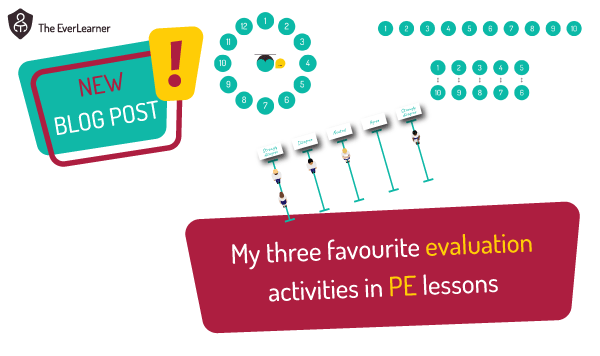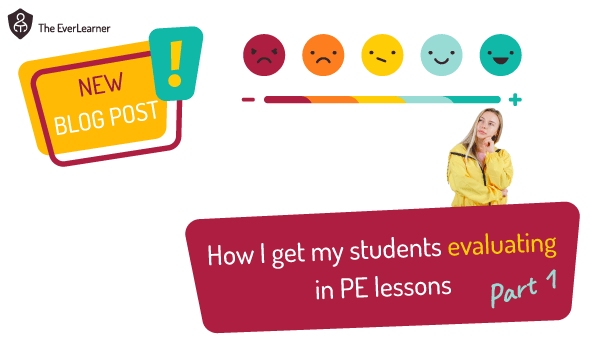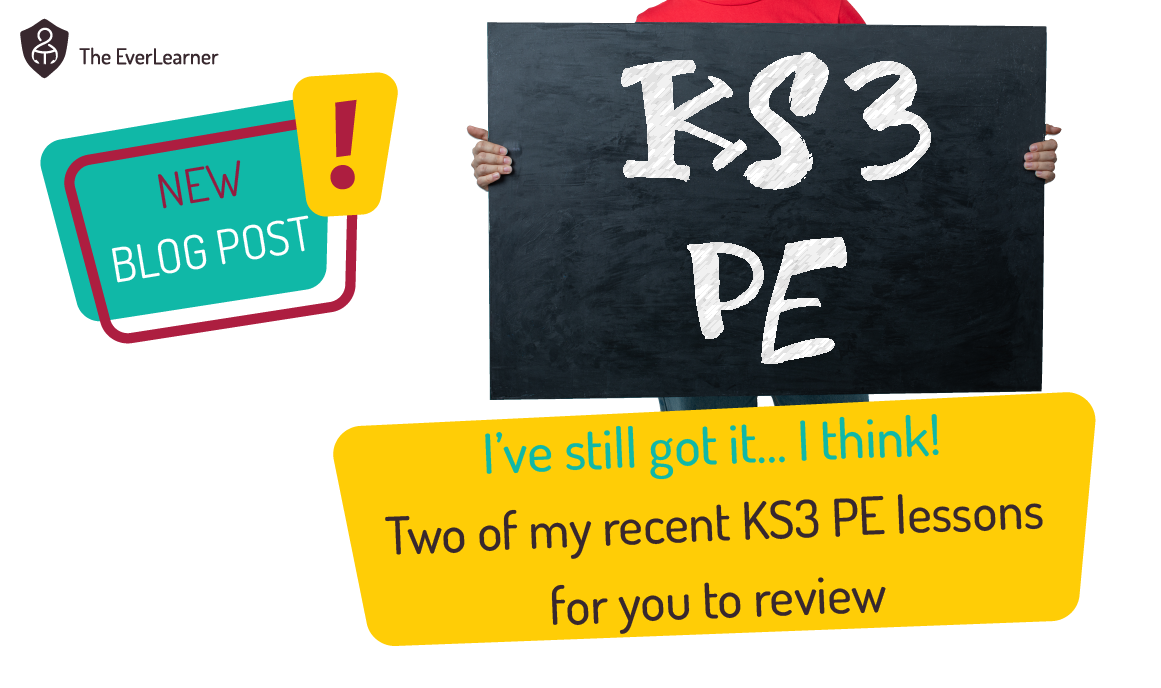How I get my students evaluating in PE lessons Part 2
Last week : Introduction to the “evaluate” skill in PE lessons. Released Wed 14th June 2023.
This week : Example lesson developing the “evaluate” skill in PE lessons. Released 21st June 2023.
In last week’s post, I highlighted the issues that many PE teachers face in supporting their examination and coursework-based PE groups to develop the evaluation skill. I also proposed a series of principles about the evaluation skill:
Principle 1 : Evaluating is a skill.
Principle 2 : The evaluation skill can only be utilised if there is good-quality knowledge and understanding of the topic in question and the application that needs to be made.
Principle 3 : Evaluating is a behaviour and this behaviour occurs in a wider array of experiences, not simply writing evaluatively.
With these ideas in mind, let’s look at my example lesson. I am going to choose a lesson I taught recently on the topic of guidance. I was teaching this for OCR A level but what follows could be equally relevant for many other levels of study too.
So, first things first, why did I decide to develop the ‘Evaluate’ skill?
Simple! Evaluating is the most common skill required in this area of study:
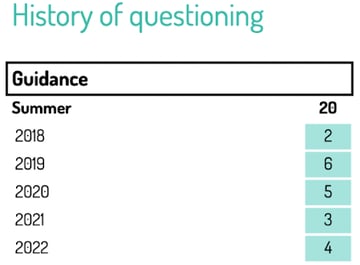
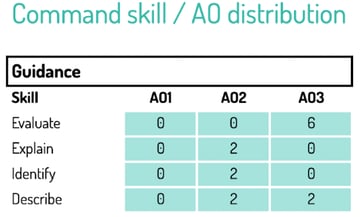
Furthermore, the specification explicitly references the skill:
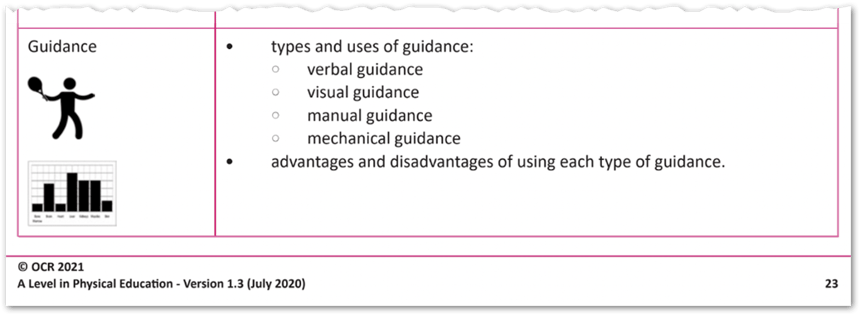
So, it’s clear: my students need to develop an evaluative focus on this topic. So, what’s next?
Well, I think my case is slightly different to others in this next step. What I do is to render down all relevant key subject language in relation to this topic, examined by OCR. I do this in the following way:
So, now I know the key language of the topic and the most relevant skills. I’m ready to plan my lessons.
| Group | Year 12s |
| Course | OCR A-Level PE |
| Topic | Guidance |
| Skill focus | Evaluate |
Pre-lesson
Element 1: Pre-load knowledge on the guidance topic
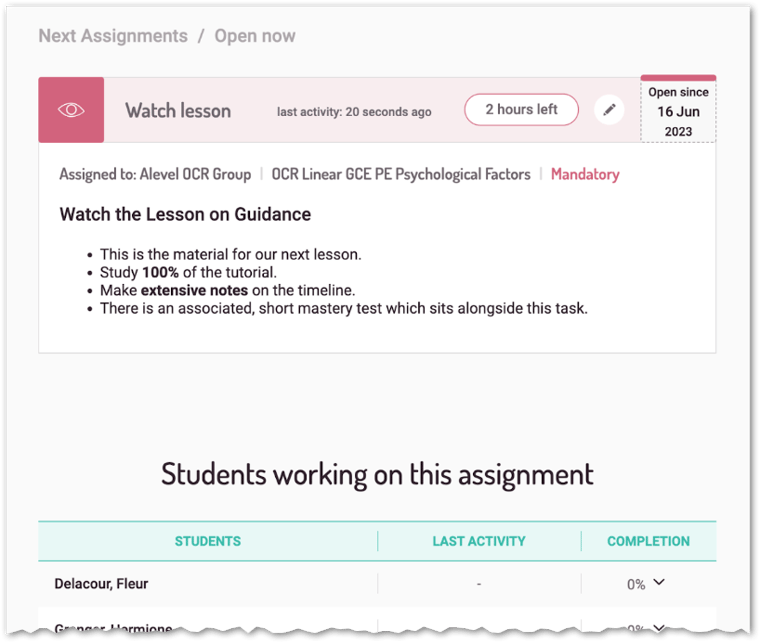
Student activity is fully tracked and reported.
Element 2: Pre-test knowledge on the guidance topic
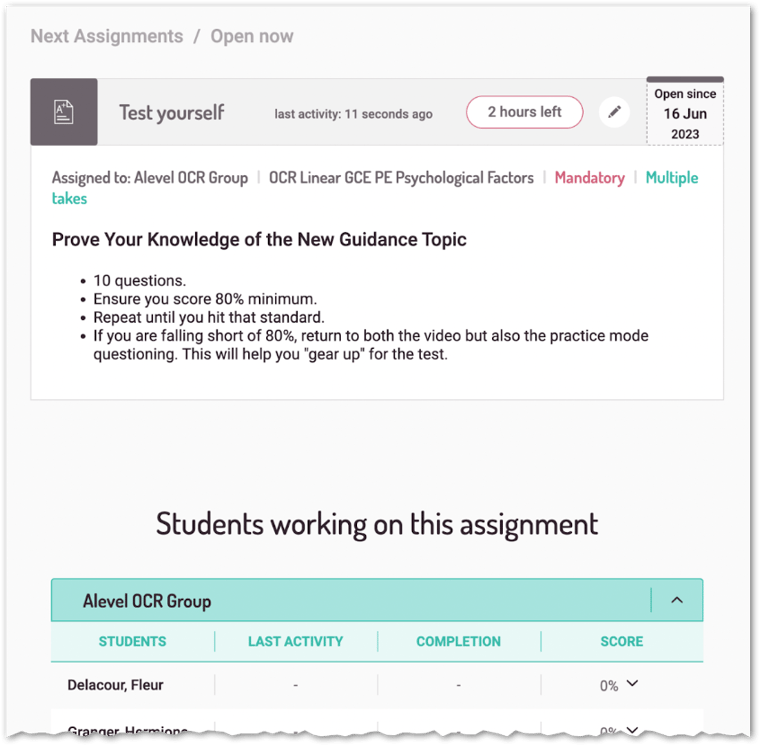
Lesson
Element 1: Warm-up
(I won’t attempt to teach grandma to suck eggs here. I would complete a very simple warm-up and stretch to prepare the group).
Element 2: Practical
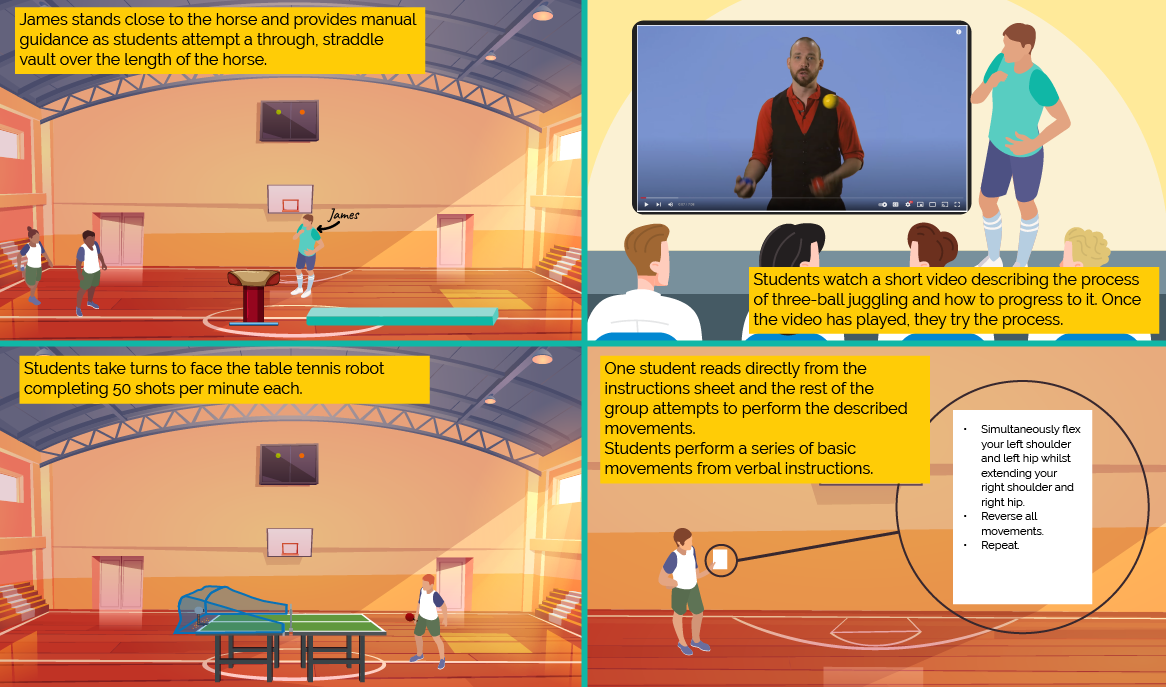
- Split the hall into four sections, ideally with a net across.
- Split the group into four and have them rotate sections every five minutes.
- Have all groups experience all four sections once.
- Afterward, bring the group together and ask them this question four times: “How was learning introduced to you?” You should get answers including pictures, instructions, machine, support. The students now have the intuition of guidance.
Return to the classroom and rapidly deliver four slides:
Element 3: Slides
My suggestion is that these slides should take less than five minutes total delivery time. I would aim to deliver them in under three minutes and then keep the final slide on the board. If I engage in Q&A here, it will be to achieve broader examples of the use of the different guidance types. However, I am determined that the low-impact activity of delivering slides should be very brief.
Element 4: Evaluative activity - Agreement Circles
Set the group into the following activity:
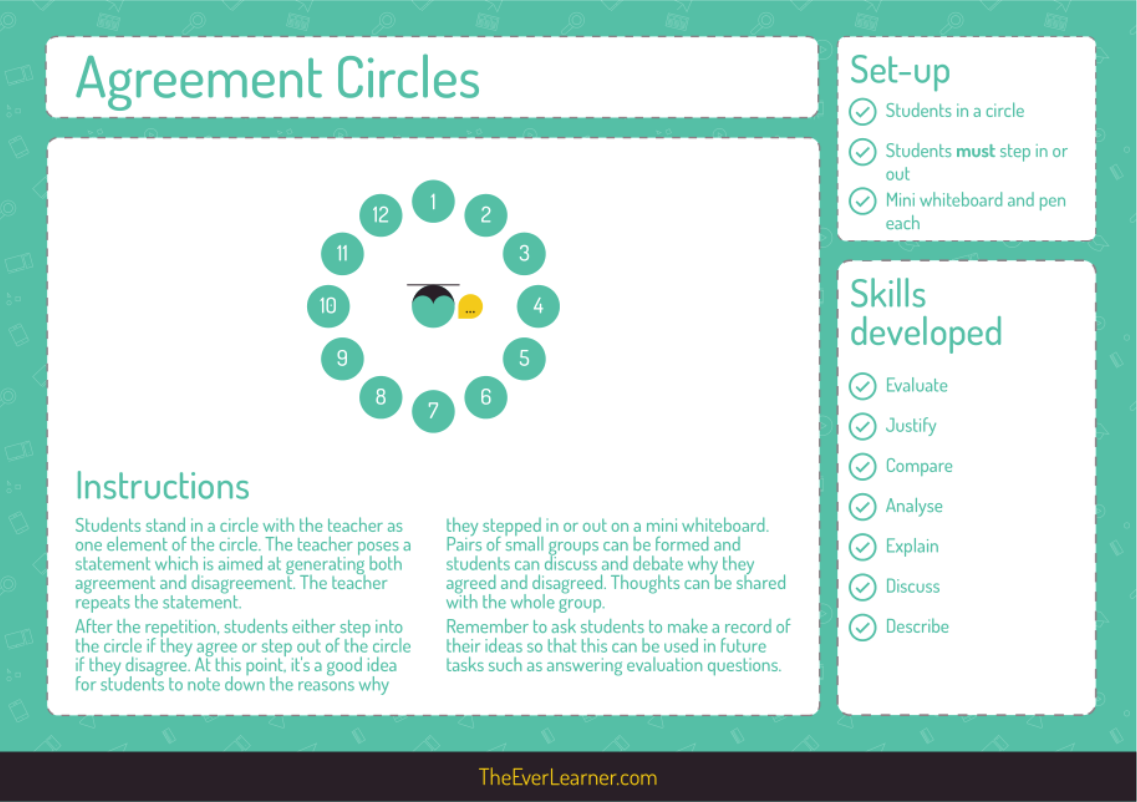
You will notice that the activity is centrally focussed on the ‘Evaluate’ skills.
Then take your time in posing some – if not all – of these statements:
- Visual guidance is the most important type for beginners.
- Visual and verbal guidance are separate.
- All coaching sessions should have all four types of guidance.
- Manual guidance is “old-fashioned”.
- Mechanical guidance is the most expensive.
etc… etc… (list of prompts not exhaustive)
After each statement is posed, students will write their reasons on their own whiteboards and, once discussion has taken place, transfer of those ideas will be made onto a central whiteboard. The central whiteboard will grow and grow until it is filled with evaluative statements made by the students. It might look something like this:
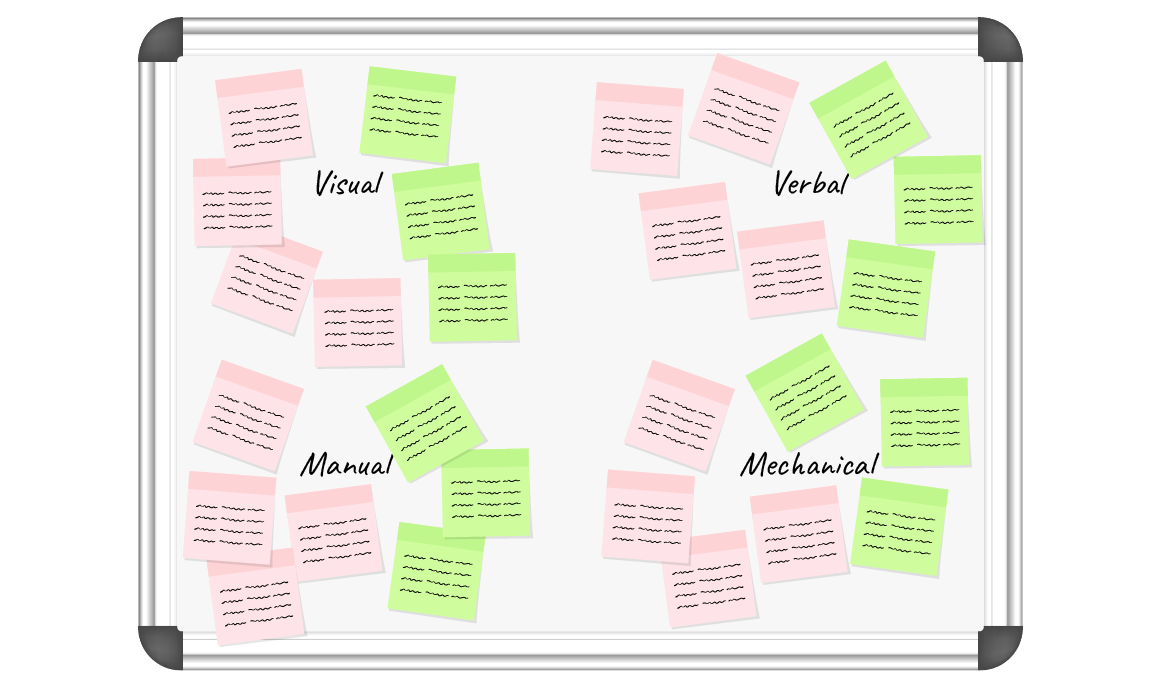
It is essential that this is teacher-managed. Relevant, “correct”, evaluative points need to be drawn out from students and the teacher should ensure through Q&A and progressive questioning that all key evaluative points are made. But, crucially, although the teacher is supporting this process, the evaluation is the students’ evaluation. I have not merely given to nor showed them the points as may be so common when teaching evaluation through slides or worksheets. No! This is their evaluation, considered by them, written by them and owned by them. They have been evaluating, not me.
Element 5: Quiz!
After agreement circles, students will return to desks (or simply sit on the floor if all desks have been removed) and complete in the region of ten minutes quizzing on the topic via TheEverLearner.com. My preference is that this is done on a phone so it is super quick and convenient. I am aware that others will not agree with this approach but, well, it’s my classroom and I do it this way. With understanding from students and appropriate lesson expectations, there is little to no threat from this choice.
Within the quiz, the teacher may choose to incorporate other topics to achieve the spacing effect and to interleave some old knowledge with new. This is how I prefer it and you can see examples in the flow of images below...

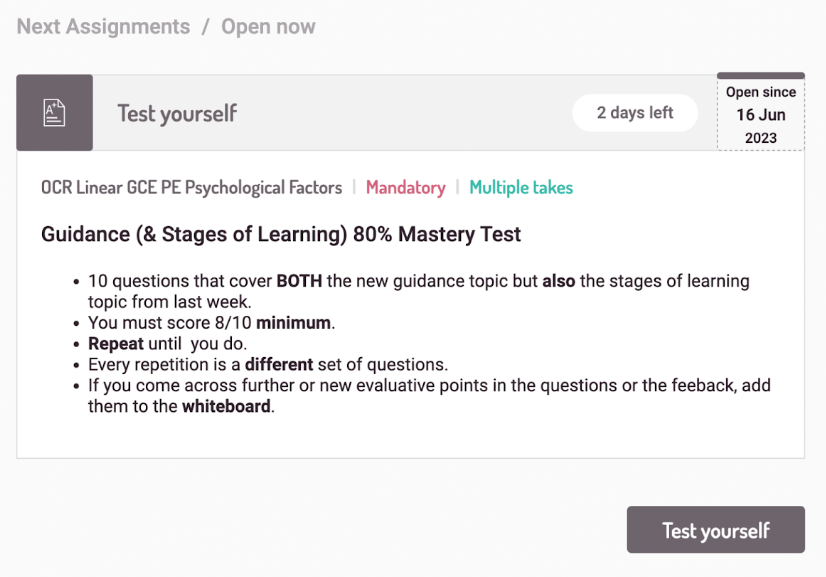
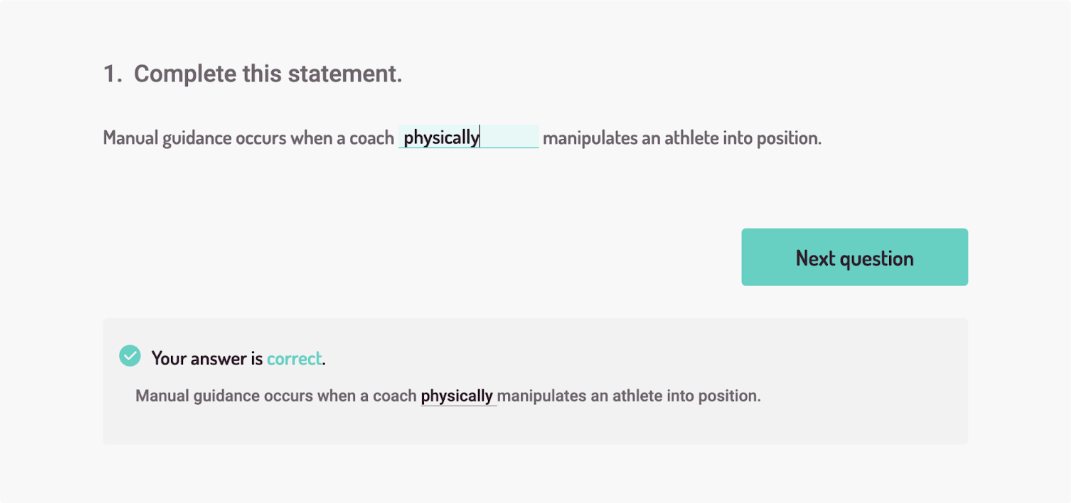
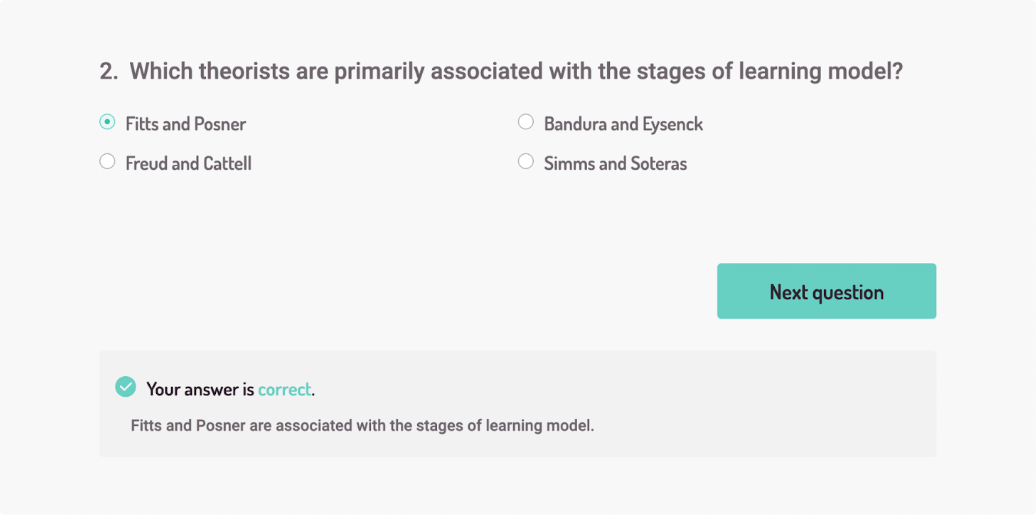
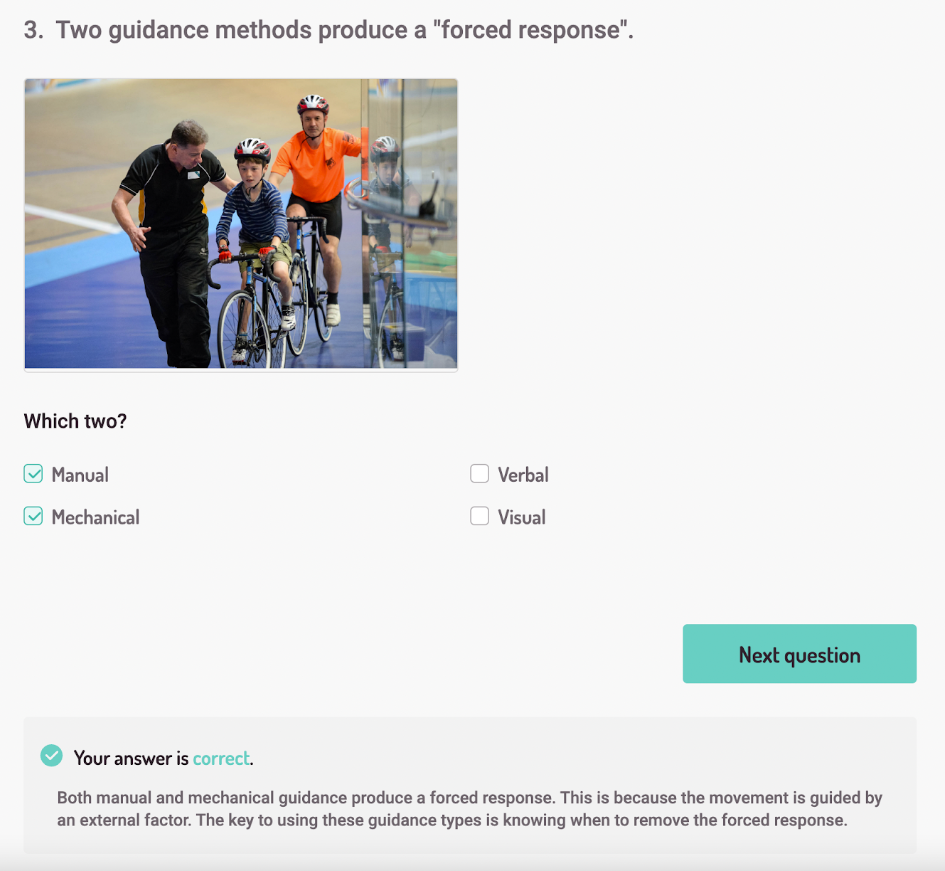
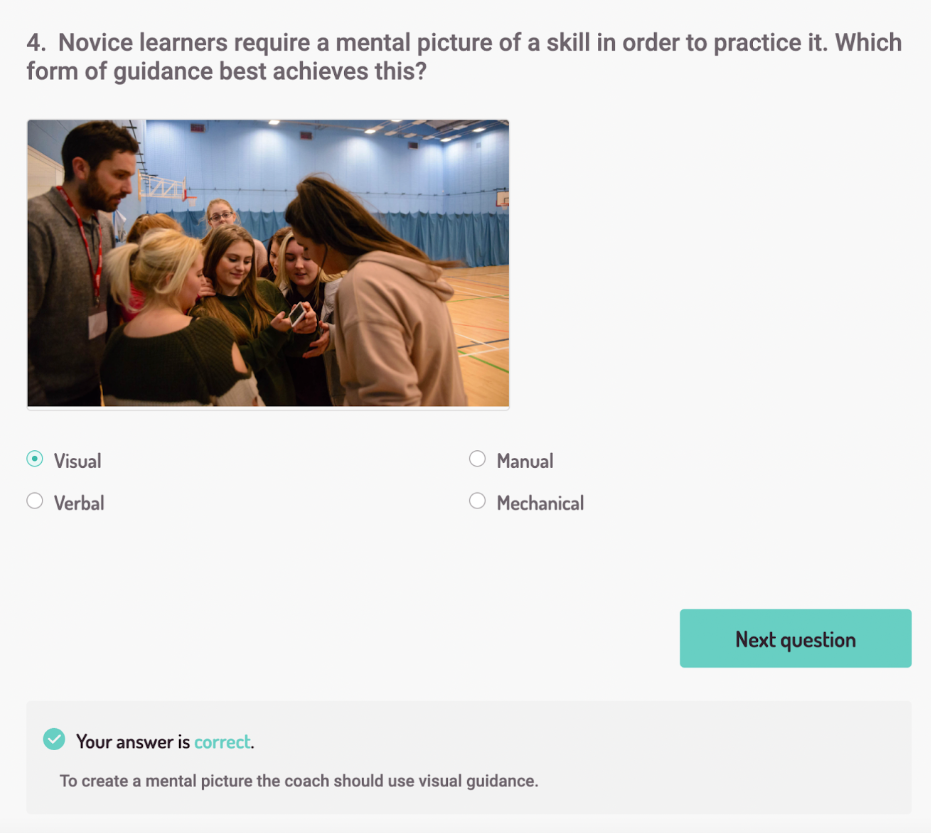
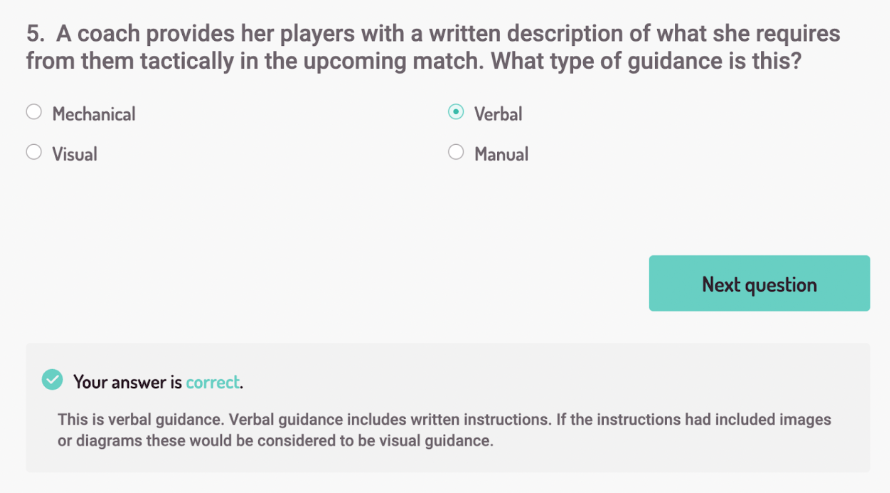

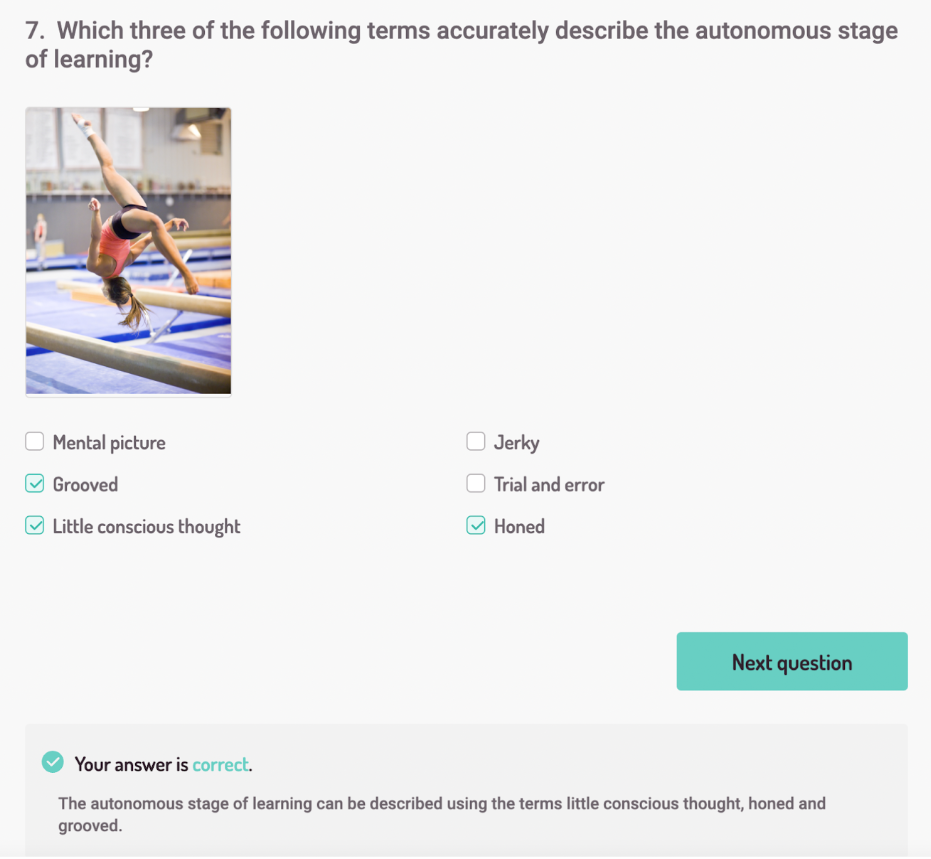
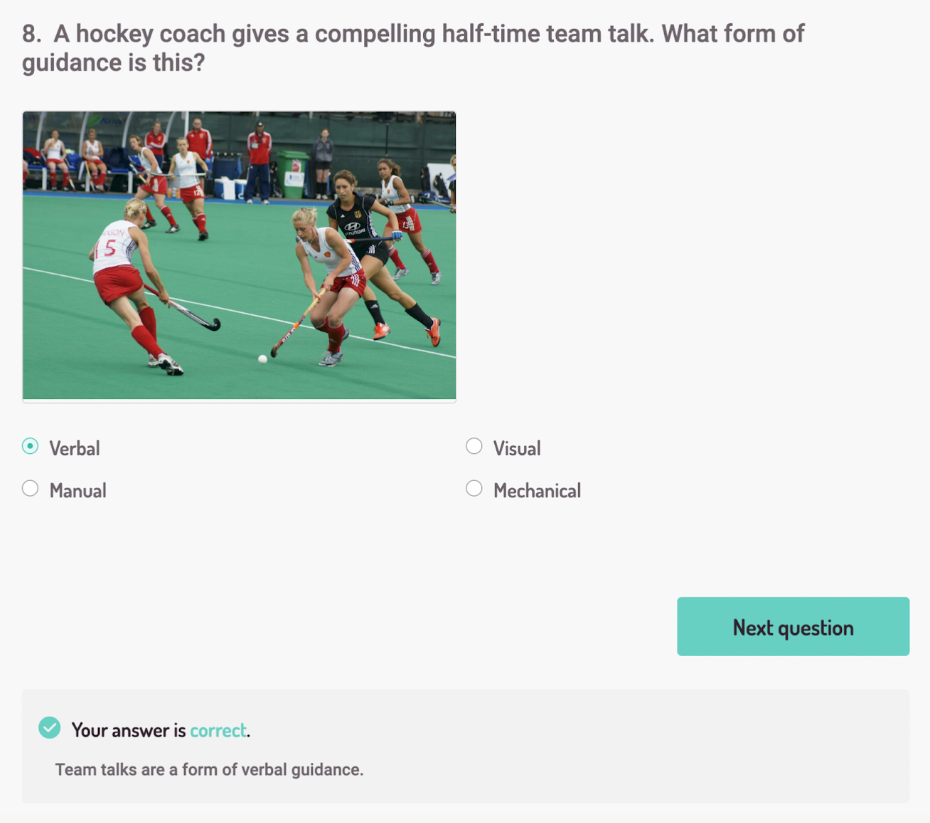
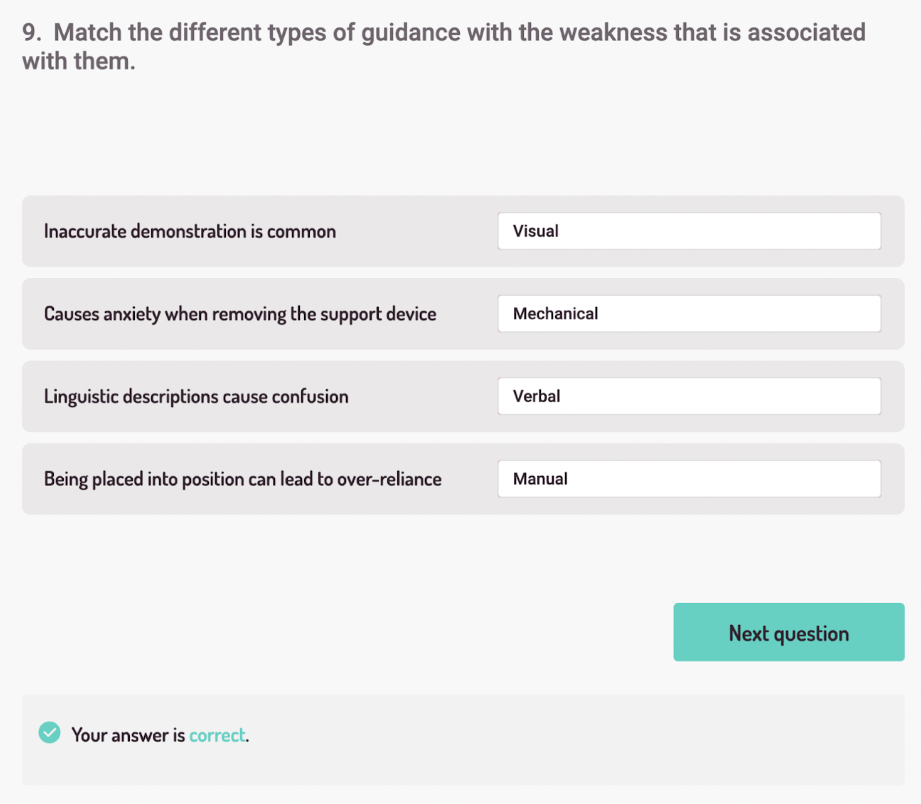
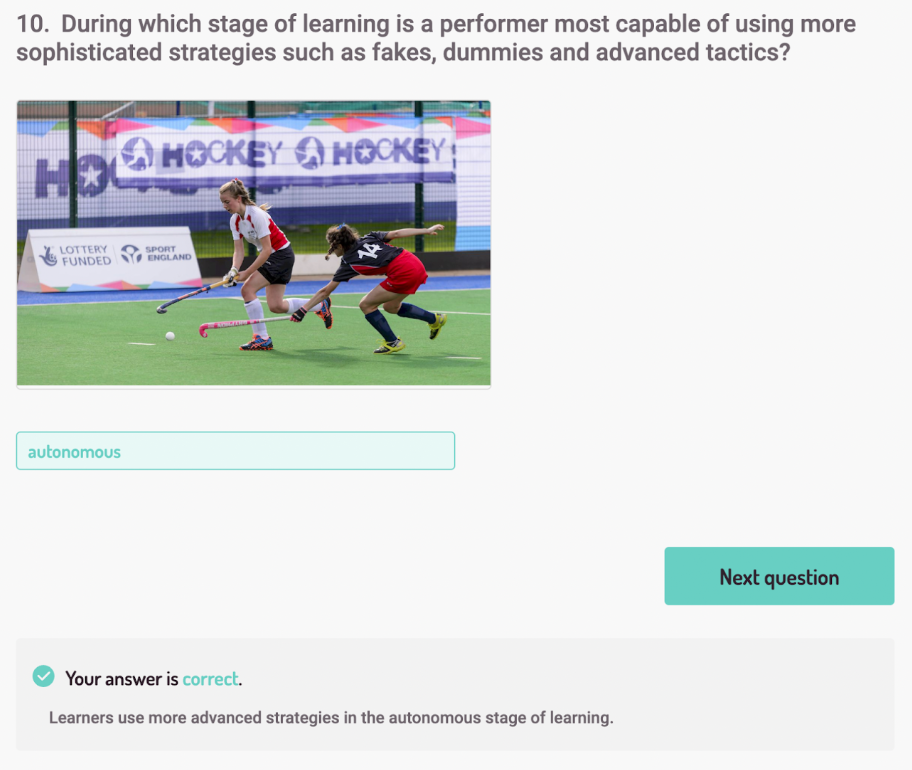
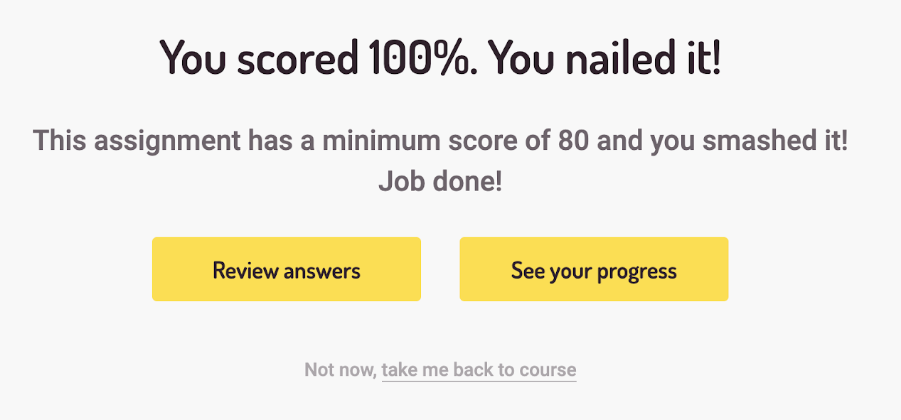

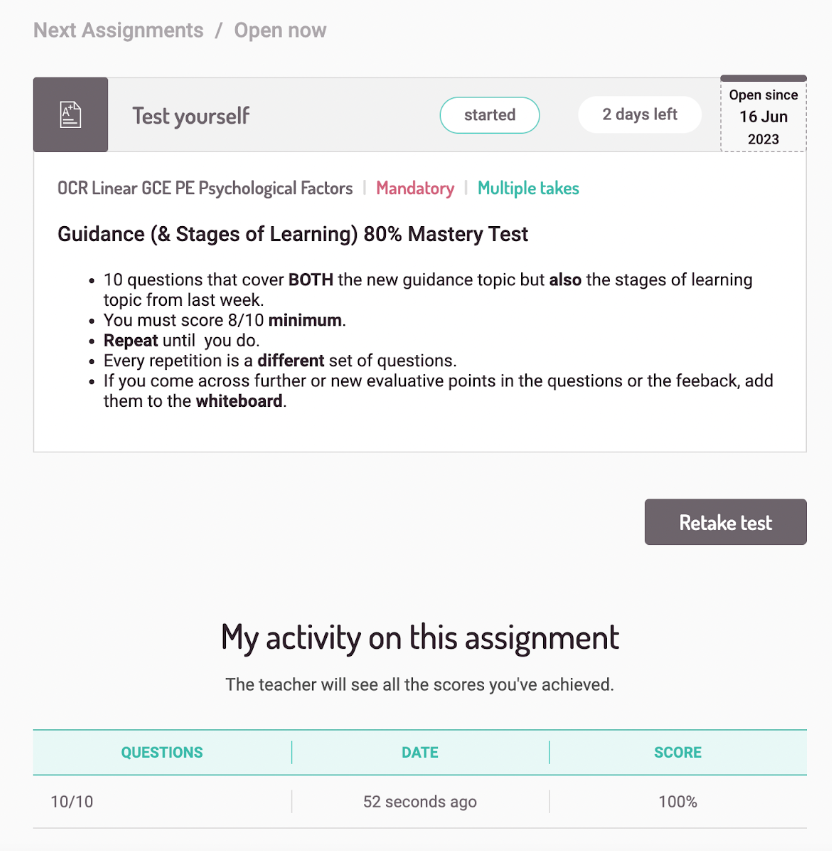
So, our students have been evaluating. They have done a rapid quiz which has a mastery standard. Now, I believe they are ready to write.
Element 6: Scaffolded evaluative writing
It’s time to put pen to paper. It is tempting to simply give a past paper question at this point and ask students to answer it but, I would argue, this is not good practice. Instead, I am going to provide a scaffolded writing experience in the form of “Pass the buck”.
Pass the buck is a collaborative writing process. I have used it very extensively in order to develop quality writing and review processes.
Pass the buck is completed like this:
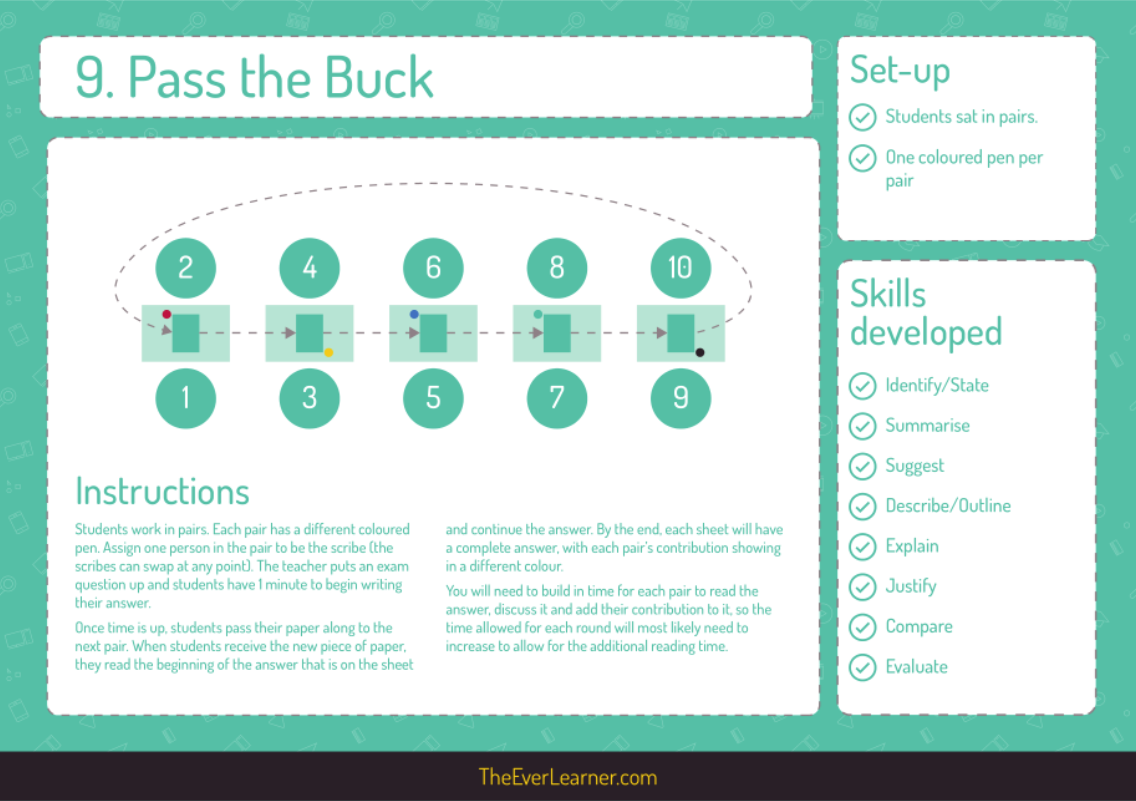
You will notice that there is a hint of competition but, crucially, a much stronger whiff of collaboration here. Pass the buck allows students to present their ideas, see those of others and have their own and others’ ideas reviewed by the group.
The questions and the answers themselves can be viewed below. All questions are taken from ExamSimulator and I have selected these individual questions from a very wide array provided.
The paper and mark scheme are available here.
Element 7: Assessed evaluative writing
Assuming there is time available in the lesson, I will now switch to a summative writing experience. All students will write in silence and with no support, including the absence of the whiteboard, on the exact questions that we completed and reviewed in the Pass the buck activity.
This writing is summative. It is also diagnostic. Why? Because after completion, all students will receive a diagnostic such as this:

Notice that Fleur is able to return to either studying, practising or testing her guidance knowledge but also that she has become aware that her evaluation skills need a bit more focus. The diagnostic also provides the resources to include the skill as well as the knowledge.
Close of lesson
So, there you have it. This is my guidance lesson. What do you think? Does it develop the ‘Evaluate’ skill? Does it support students in the skills they are required to perform? Is it different to how you would do it? If so, how?
Finally, thank you for reading through this post. It’s somewhat of a monster but, hopefully, it is worth your time. Should you wish to connect with me about these ideas or invite me to support you and your team on such considerations, reach out to me via james@theeverlearner.com.
Have a wonderful day.
%20Text%20(Violet).png)
